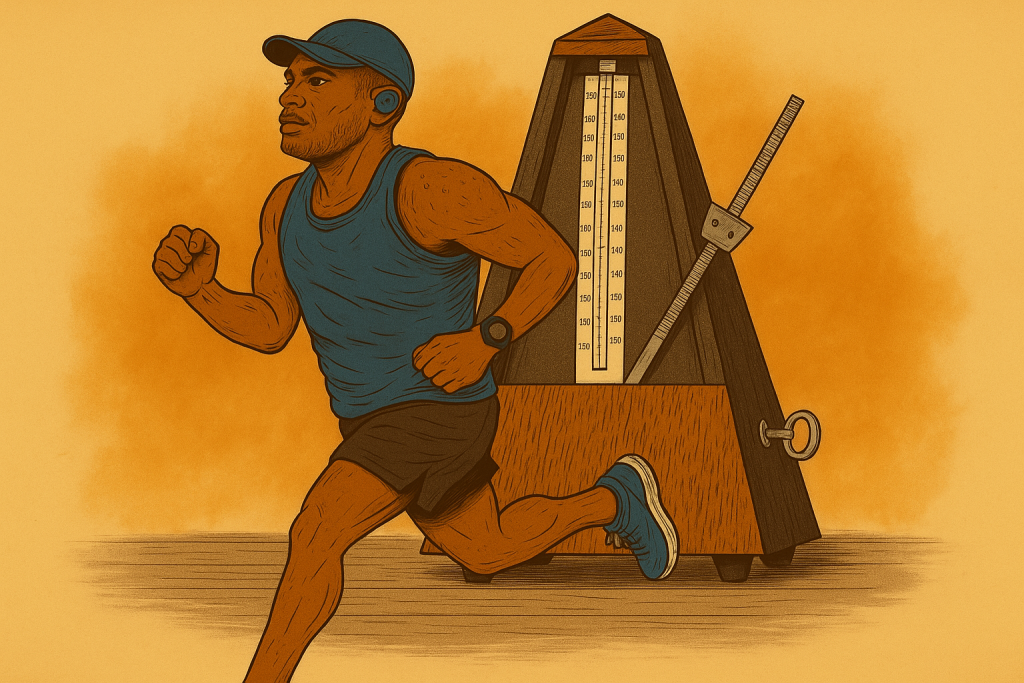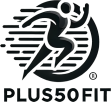Build Phase 2 | Week 3 | Run 4 – My Road to TOWaterfront 42K
How it Began
I had stomach distress through the night into the wee hours, so I decided to keep this one short and easy. Other than a couple of SaltStick tabs and swigs of Nuun, I ran fasted. By the time I started moving, I felt ready.
How it Went
After a short dynamic warmup, I settled in. I hoped the slightly later start wouldn’t burn me – it didn’t. Once the sun began to toast, I’d already found my stride.
Today’s goal was to reset my cadence and reconnect with my old training partner, Drum Buddy. I piped steady beats at 162–165 BPM through my Shokz. The rhythm kept me strong and smooth, especially on the climbs, even as my heart rate flirted with Zone 3.

The beauty of running to cadence: it anchors you. You can ease up, push ahead, or even play with stride length while the beat keeps you honest.
Interestingly, my 4th kilometer felt astonishingly strong – almost like my legs unlocked an extra gear.
This was a win among wins.
Metrics at a Glance
| Lap | Duration | Pace (min/km) | Avg HR | IF | Cadence | NGP | Notes |
| 1 | 6:47 | 6:47 | 131 | 0.64 | 162 | 6:18 | Warm-up |
| 2 | 6:28 | 6:28 | 138 | 0.67 | 164 | 6:33 | Settling |
| 3 | 6:37 | 6:37 | 145 | 0.74 | 165 | 6:03 | Strong |
| 4 | 6:18 | 6:18 | 147 | 0.75 | 166 | 6:19 | Surprisingly powerful |
| 5 | 6:37 | 6:37 | 149 | 0.78 | 165 | 6:26 | Holding form |
| 6 | 2:12 | 6:15 | 152 | 0.82 | 166 | 6:11 | Short final push |
| 7 | 0:17 | 7:04 | 154 | 0.86 | 166 | 7:57 | Cool-down step |
Overall: 6.43 km | 35:18 | Avg Pace 6:32/km | Avg HR 143 bpm | Cadence 164 | rTSS: 34 | hrTSS: 32
From the Coach’s Corner
- Cadence Control: This run was textbook – you locked into 162–166 spm and held it without drifting. That stability will pay dividends in late-race fatigue.
- Effort Balance: Your HR crept up from low Z2 (Lap 1–2) toward Z3 by Lap 6, which is expected when running with a cadence metronome. Still, you stayed under threshold.
- NGP Insights: Normalized pace (6:19/km) shows you actually moved a touch more efficiently than the raw average suggests, especially on climbs.
- Surprise Strength: Lap 4 stood out – fastest split, higher HR, yet sustainable. That “astonishingly strong” feeling is a marker of adaptation.
Now, about your “Dew Point What-If Pace”
Your actual avg pace was 6:32/km in DP = 19 °C conditions.
Using the RunnersConnect dew point pace penalty table:
- DP 19 °C → typically ~5% slowdown penalty.
- 6:32/km minus 5% = ~6:12/km (9:59/mi) as your October-like adjusted pace.
That’s close to your NGP 6:22/km already — meaning TrainingPeaks factored in terrain/grade, while our dew-point strip shows what you might have run in cooler, drier October conditions.
Conclusion
This run was short, steady, and deceptively strong. Despite a rough night and warmer start, I kept cadence locked, felt control on ascents, and even found a surprising burst in the middle.
One more brick laid on the road to the Toronto Waterfront Marathon.
Recap, Recover, Relax & Ready.
